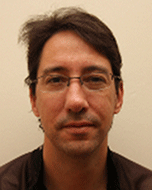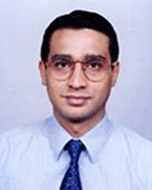Utilising current technologies to understand permeability, stress azimuths and magnitudes and their impact on hydraulic fracturing success*
Raymond Johnson A , Brent Glassborow B , Jeremy Meyer C , Michael Scott D , Ashish Datey E and Zachariah Pallikathekathil FA QGC 275 George St Brisbane, QLD 4000. Email: ray.johnson@bg-group.com
B QGC 275 George St Brisbane, QLD 4000. Email: Brent.Glassborow@bg-group.com
C JRS Petroleum Research Magill SA. Email: jmeyer@jrspet.com
D QGC 275 George St Brisbane, QLD 4000. Email: Michael.Scott@bg-group.com
E Schlumberger Oilfield Australia Pty Ltd Melbourne VIC. Email: datey1@melbourne.oilfield.slb.com
F Schlumberger Oilfield Australia Pty Ltd Level 5, 256 St Georges Tce, Perth WA 6000. Email: zach@slb.com
The APPEA Journal 50(2) 736-736 https://doi.org/10.1071/AJ09100
Published: 2010
Abstract
In coal seam gas exploration and appraisal, stress and permeability are often inter-related and play a large role in deliverability, particularly affecting hydraulic fracturing effectiveness. Generally, the structural setting for a coal seam gas (CSG) play can be defined by indirect data such as petroleum wells, core wells or seismic data; however, the viability of a structure to be highly conducive to CSG development also requires direct measurements to fully define the effects associated with this interdependency of stress and permeability. Unfortunately, this interdependency may not be as apparent during the exploration phase as within the planning, execution and evaluation of a hydraulic fracturing program.
We will present data from a limited area of the Surat Basin, in the Walloon coal measures, where initial regional and well data were available to allow drilling to evaluate a small, localised, structural setting for CSG development. While some permeability data were encouraging in the initial program, subsequent drilling indicated that permeability might become variable across this structure. Thus, further investigations were made and included novel, cross-dipole sonic logging in combination with acoustic and more advanced resistivity imaging logs. These data indicated that the stress and permeability azimuths may be aligned to take advantage of hydraulic fracturing. Thus, a hydraulic fracturing program was initiated in this area incorporating diagnostics to understand the potential benefit of this technology.
The results of this program, while localised, do indicate that a potential pitfall can exist in some environments where the stress magnitudes along with stress and dominant permeability axes are not ideally positioned to take advantage of hydraulic fracturing. We will show how the data in this case were acquired, evaluated and integrated to support the overall understanding and interpretation of the results. Due to space constraints, this paper focusses primarily on the overall data process and is unable to elaborate fully on all diagnostics used and the fullness of their determinations; however, adequate supporting evidence is supplied in order to illustrate the problems in executing and achieving effective stimulation in similar structural settings.
Keywords: Surat Basin, Walloon coals, coal seam gas, coalbed methane, hydraulic fracturing, stress, permeability, cleats, natural fractures, azimuth, anisotropy, petrophysical, logging, sonic, image, acoustic, mechanical earth model, diagnostic, microseismic, tiltmeter

Ray Johnson is currently Manager-Technical for QGC in Brisbane. He completed a BA in chemistry and MS in petroleum engineering and is currently a PhD candidate at the University of Queensland. He has spent the last thirty-years working in conventional and unconventional hydraulic fracturing design, execution and evaluation throughout Australia and North America in roles with service, consulting and operating companies. He has written several SPE papers and made numerous presentations on hydraulic fracture optimisation. Member: SPE and SPWLA. |

Brent Glassborow studied applied geological science and completed his Honours in petroleum geology and geophysics at the Australian School of Petroleum, Adelaide University. Brent joined QGC in 2005 and has worked in field operations, exploration and developments. He is now the Principal Operations Geologist. Prior to joining QGC, Brent worked in various offshore basins with Halliburton, Sperry Sun Division. |

Jeremy Meyer completed a BSc majoring in applied mathematics and Physics before completing a PhD in geomechanics as part of the Stress Group at Adelaide University. He subsequently work at the Australia School of Petroleum undertaking contract research, prior to forming JRS Petroleum Research Pty Ltd. He has spent the last eight years working as a geomechanics and image log specialist throughout the Australasian region in a variety of sectors including conventional oil and gas, coal seam gas, geothermal energy and CO2 sequestration. Member: SPE, PESA and AAPG. |

Michael Scott studied mechanical engineering and completed his PhD in aerospace engineering at the University of Queensland in 2005. In the same year he joined QGC and since then has worked as a production engineer, reservoir engineer and frac engineer. He is currently working in the production enhancement team for QGC’s CBM assets. |

Ashish Datey is the Petrophysics Domain Champion for Schlumberger covering the Australasia region. He is a graduate from the Indian Institute of Technology, Delhi. Ashish joined Schlumberger in 1989 as a wireline field engineer. Since 2000, he has been providing petrophysics expertise to Schlumberger’s client base in the central Asian and West African regions, before moving to Melbourne in 2006. Since 2009 he has been actively involved with the coal seam gas (CSG) operators in Brisbane, providing Petrophysics support for solving some of the challenges in evaluating CSG reservoir properties. |

Zachariah John Pallikathekathil (Zach) is the geomechanics coordinator with Schlumberger Australia Pty Ltd based in Perth. After completing his graduation in mechanical engineering with electives in computer science from Indian Institute of Technology, Delhi, Zach joined Schlumberger as a wireline logging engineer. His interest in log interpretation drew him to specialise in petrophysics and geosteering. After being in the management line in the data and management segment in Schlumberger, he moved to the technical line, being the domain champion for petrophysics covering wireline and LWD interpretation for the Australia geomarket. Due to his passion in geomechanics and with a background in engineering, he moved from petrophysics to geomechanics, taking up many internal training courses in geomechanics in Schlumberger and external courses from UWA. He has undertaken many geomechanics projects in the last few years especially in the field of 1D-MEM, borehole stability, sanding and reservoir geomechanics where information from LWD, sonic scanner, rock test results are brought together for a clearer understanding of the in situ stress state of the rock. He is a keen member of FESAus and the president elect for FESAus 2010. |
References
Harvey, N., and Glassborow, B., 2008—Comparison of acoustic and electrical borehole imaging devices: information available and its application to improving production. Asia Pacific Coalbed Methane Symposium, 22–24 September, paper 69.Johnson, R.L., Jr., Scott, S., and Herrington, M., 2006—Changes in completion strategy unlocks massive Jurassic coalbed methane resource base in the Surat Basin, Australia. SPE Annual Technical Conference and Exhibition, San Antonio, Texas, U.S.A., 24–27 September, SPE 101109.
Pistre, V., Kinoshita, T., Endo, T., Schilling, K., Pabon, J., Sinha, B., Plona, T., Ikegami, T., and Johnson D., 2005—A modular wireline sonic tool for measurements of 3D (azimuthal, radial, and axial) formation acoustic properties. 46th Annual Logging Symposium, 26–29 June, SPWLA.
Scott, S.G., Anderson, B., Crosdale, P.J., Dingwall, J.A., and Leblang, G., 2004—Revised geology and coal seam gas characteristics of the Walloon Subgroup—Surat Basin Queensland. Eastern Australasian Basins Symposium II, Petroleum Exploration Society of Australia, Special Pub. In: Boult, P.J., Johns, D.R., and Lang, S.C. (eds), 345–55.
Sinha, B.K., 2004—Near-wellbore characterization using radial profiles of shear slowness. Society of Exploration Geophysicists, 74th Annual International Meeting, Expanded Abstracts.


